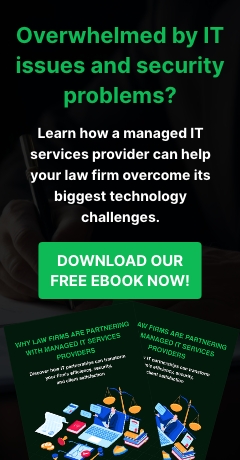
Other statistics from the United States Small Business Administration claim that within two years of a disaster, 90 percent of businesses close their doors forever. This is why these organizations have long been warning SMBs about the importance of ensuring precious data is backed up and that all organizations have a disaster recovery plan in place. It could be the thing that saves your company, the jobs of your employees and your hard-won reputation.
It is a common misconception that insurance awards and aid from government agencies will allow merchants and SMBs to pick up the pieces after a flood, major earthquake or like disaster — many types of disasters are not covered under normal insurance policies and aid from government agencies may be too little, too late.
With winter on its way, and weather patterns changing, emergency preparedness is a hot topic. Many municipalities and chambers of commerce are sponsoring safety forums and emergency preparedness workshops.
While very useful, most of these forums and workshops focus on the immediate dangers of a disaster and not on long-term business survival. While immediate response to a disaster is undeniably important, the importance of long-term business survival is almost as great.
When listing disasters, most people start with earthquakes, floods, and fires, along with the more recent additions of terrorism and war. However, smaller incidents, such as burglary or water damage due to faulty sprinkler systems, can be just as catastrophic to businesses.
Incidents need not affect a whole community or area to cause a catastrophic business failure. Even non-catastrophic occurrences can result in immense losses of time and money.
The point is that disasters, whether acts of nature or man-made mishaps, can strike unexpectedly at any organization. Recovering from a catastrophe can be very demanding, expensive, and time consuming—especially for those who haven’t taken preventative measures and preparations.
What can you do to prepare? Develop a Business Continuity Plan (BCP), which will enable your business to resume normal operations after a significant data loss or network downtime due to natural disasters, sabotage, theft, or equipment failure.
Even if you already have a BCP, it’s important to make sure that your plan is flexible and scalable, and can adapt to the natural changes that your business undergoes.
For example, software and hardware installations, updates, and modifications are an important part of business continuity planning. Your data should be properly and regularly backed up, and you need storage and recovery systems and procedures that are continually updated with changes that constantly occur in your IT.
In addition to having a flexible and scalable BCP, you also need a highly skilled IT staff that is up to speed on the importance of backup and recovery of data. It’s important that this staff is properly trained to implement your BCP in the event that your business experiences a major data loss.
Unfortunately, companies routinely suffer significant data loss because they discover the errors in their systems too late—usually while trying to recover the data.
Your business is important to you—and to us, too. We’re here to help you create or fine-tune a BCP that is best suited to your unique business needs, as well as prepare and assist your staff in implementing the plan should it become necessary. Contact us for more details.

Leave a comment!
You must be logged in to post a comment.